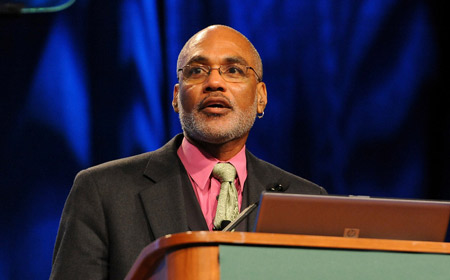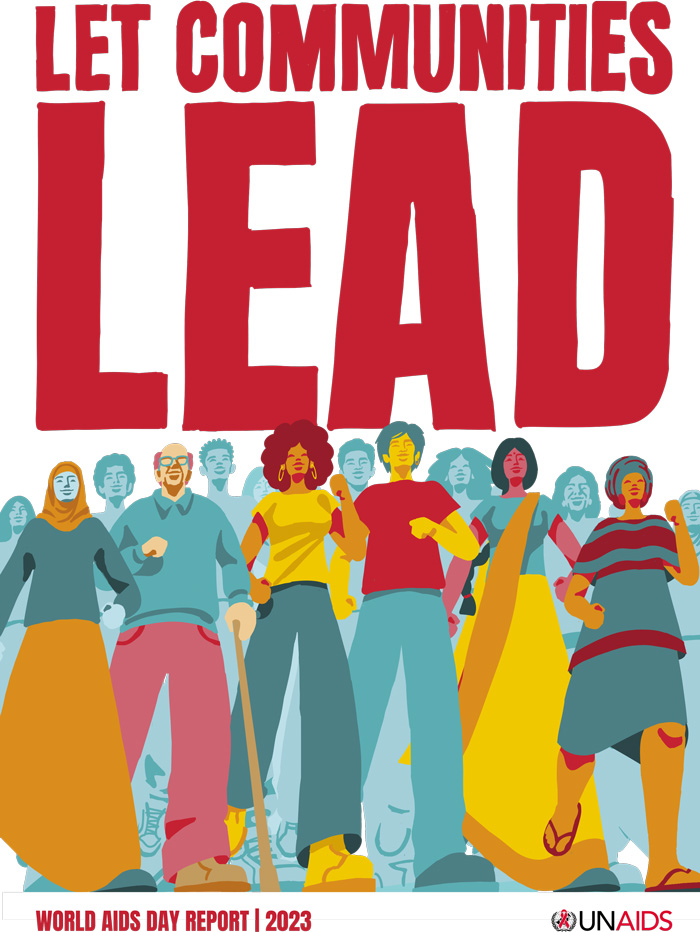Our People, Our Problem, Our Solution
By Phill Wilson
I was a 24-year-old Black gay man living in Chicago when the first cases of AIDS were diagnosed in 1981. Like everyone else, I thought then that AIDS was a “white gay disease”. I was wrong.
The truth about the HIV epidemic in the United States of America is that Black gay men, and Black people in general, have been disproportionately affected from the very beginning.

Unknown to me at the time, I was already living with HIV. I tested positive for HIV in 1985, only a few weeks after the United States Government licensed the first HIV test. My doctors gave me 6 months to live.
When I came out to my father, he told me: “Since you have to do your own dying, you might as well do your own living.” I decided to focus on the living part.
In 1988, my good brister (brother and sister) Reggie Williams, other gay men and I joined together to create the National Task Force on AIDS Prevention to educate Black gay men about HIV, raise awareness of the epidemic’s disproportionate impact on Black gay men, and demand increased funding for HIV prevention. In 1999, I founded the African American AIDS Policy Training Institute (later to become the Black AIDS Institute), the country’s first and only thinktank at the time focused exclusively on ending the AIDS pandemic in Black communities.
For more than two decades, the Black AIDS Institute published policy reports on AIDS in Black America, delivered services in Black communities, and raised HIV awareness and commitment in key sectors of the Black community, including community organizations, political leadership, medicine and research, the media and churches.
Everything the National Task Force and the Black AIDS Institute were able to do was only because people worked shoulder to shoulder with other members of the community. Our empowerment did not come from the “powers that be”. Instead, we found it through collective action.
The motto of the Black AIDS Institute is “Our people, our problem, our solution”. We understood that if the HIV pandemic was ever going to end in our communities, we had to lead the effort. We had to be involved at every level, from conception to execution, promotion and evaluation. It meant that the policies and programmes for us needed to be decided by us, and that our government needed to work with us as full and equal partners. Our slogan emphasized that ending the epidemic requires that communities lead and drive the fight.
Over four decades, I have seen how communities have shaped and, in many cases, transformed the HIV response. People living with and affected by HIV are now included at decision-making tables that once were not open to us. Community advocacy has helped reform HIV research, accelerating the development of transformative HIV treatment and prevention tools.

But AIDS is far from over. Numbers of new HIV infections are declining too slowly, and worldwide more than 9 million people living with HIV are still not receiving treatment. In the United States, rates of viral suppression are lower among Black Americans and other BIPOC communities than white Americans. Among people who are at risk of acquiring HIV, Black gay men are several times less likely than white gay men to have access to pre-exposure prophylaxis (PrEP). Black people in the United States are eight times more likely to be diagnosed with HIV than white Americans.
Dr Martin Luther King Jr said: “Injustice anywhere is a threat to justice everywhere. None of us are free until we are all free.” We can never end AIDS until we end the inequalities that perpetuate the pandemic. And we cannot overcome inequalities without the power of community leadership. Communities are truthtellers, holding governments and others accountable for keeping their commitments. Communities know our own challenges better than anyone, and we also know best how to solve them. When it comes to overcoming access barriers and keeping people engaged in services, the best results are delivered when we support each other.
As I am finishing this essay, I am looking at a couple of pictures in my home. One is a photo from the mid 1980s of me with my friends Ken, Roger and Steven. I am the only one of us still alive. The second photo is of me and my friend David; he died in 1998. My home is filled with photos of dead people, including Reggie Williams, Marlon Riggs, Craig Harris, Fred Garnett, Rory Buchanan and Chris Brownlie.
When I first got involved in the AIDS fight, we lacked effective treatments and had few HIV prevention tools. Today, we have the means to end AIDS as a public health threat. We owe it to all those men and women on my walls—to the more than 700 000 people in my own country and the more than 40 million worldwide who have died from AIDS-related diseases—to follow through to the end.
Governments have committed to getting to the end of AIDS as a public health threat by 2030. They can fulfil their promise—but only if they let communities, particularly those most affected, lead the way.
amfAR Board Member and founder of the Black AIDS Institute Phill Wilson penned this essay for UNAIDS’ 2023 World AIDS Day report, Let Communities Lead.
Share This:
